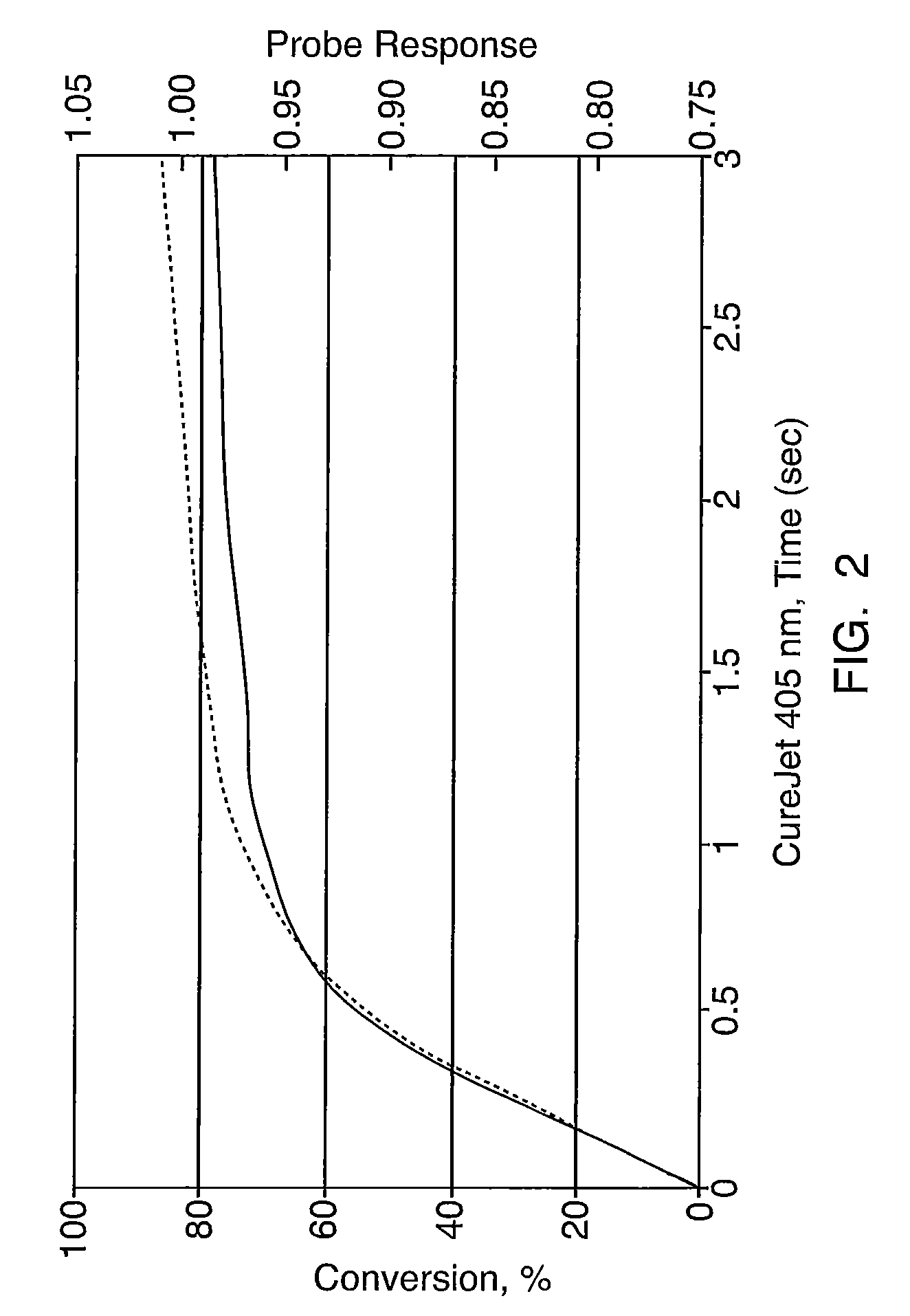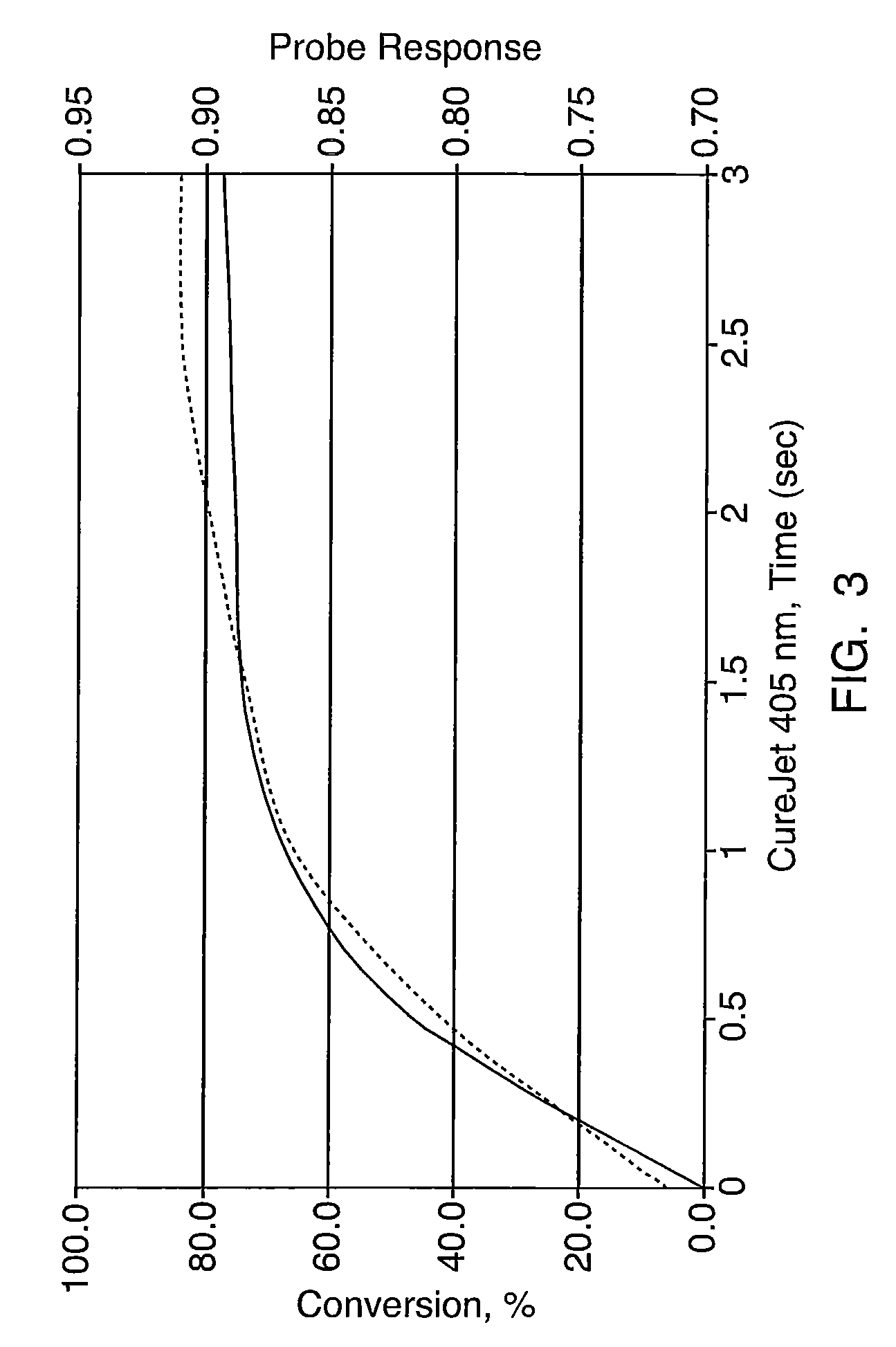Methods for measuring degree of cure or solidification of a composition
- Summary
- Abstract
- Description
- Claims
- Application Information
AI Technical Summary
Benefits of technology
Problems solved by technology
Method used
Image
Examples
examples
[0055]In accordance with the present invention, exemplary polymerizable compositions having a wavelength-shift fluorophore therein were subjected to polymerization during which time the emission wavelengths of the wavelength-shift fluorophore were measured and correlated to the degree of polymerization or another polymer property.
[0056]In particular, the exemplary polymerizable composition, Loctite® AssureCure™ 3924AC™ having a wavelength-shift fluorophore (i.e., 7-diethylamino-4-methyl-coumarin) in an amount of 0.075% weight therein, was subjected to polymerization via light curing and the florescence spectra of the wavelength-shift fluorophore detected.
[0057]As illustrated in FIG. 1, following exposure to an excitation wavelength of 385 nm (filtered), there was a shift in fluorescence emission wavelength as well as a reduction in fluorescence peak intensity of the wavelength-shift fluorophore. Notably, the fluorescence intensity ratio was determined to be 0.7139 at 410 / 444 nm.
[005...
PUM
| Property | Measurement | Unit |
|---|---|---|
| Degree of polymerization | aaaaa | aaaaa |
| Strength | aaaaa | aaaaa |
| Wavelength | aaaaa | aaaaa |
Abstract
Description
Claims
Application Information
 Login to View More
Login to View More - R&D
- Intellectual Property
- Life Sciences
- Materials
- Tech Scout
- Unparalleled Data Quality
- Higher Quality Content
- 60% Fewer Hallucinations
Browse by: Latest US Patents, China's latest patents, Technical Efficacy Thesaurus, Application Domain, Technology Topic, Popular Technical Reports.
© 2025 PatSnap. All rights reserved.Legal|Privacy policy|Modern Slavery Act Transparency Statement|Sitemap|About US| Contact US: help@patsnap.com



